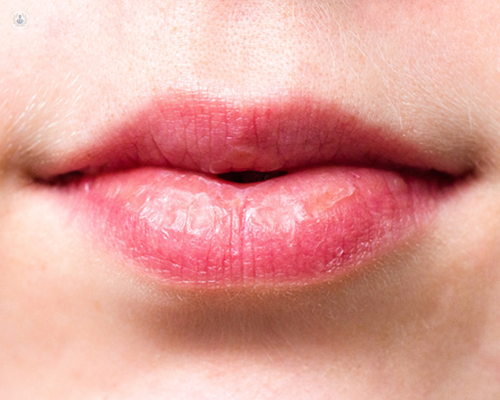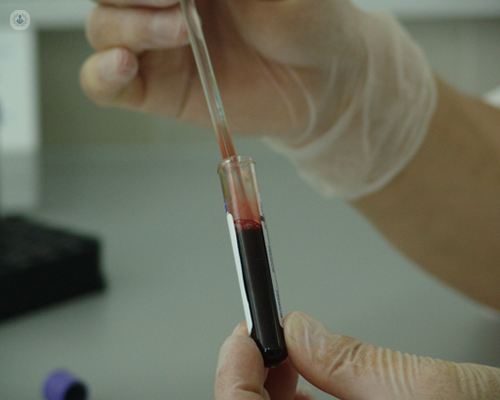Sjogren's syndrome
Dr Michelle McHenry - Rheumatology
Created on: 11-13-2012
Updated on: 05-04-2023
Edited by: Karolyn Judge
What is Sjögren’s syndrome?
Sjögren’s syndrome is a disease that affects moisture-producing glands of the body. Specifically, it is an autoimmune disorder (meaning the immune system attacks the cells of its own body) in which the tear- and saliva-producing glands are destroyed, leading to dry mouth and eyes. The syndrome can also affect other parts of the body, including the joints, blood vessels, digestive organs, nerves, kidneys and lungs. Very often, it dries out other parts of the body that need to remain moist, such as the nose, the skin and the throat. It is classified as a rheumatic disease affecting joints, tendons, ligaments, bones and muscles. The syndrome generally affects people aged over 40 years. Sometimes, it is linked to diseases such as rheumatoid arthritis and lupus.

Is Sjögren's syndrome a serious disease?
Sjögren’s syndrome is an autoimmune disease which means that healthy tissues and cells are attacked by the immune system by mistake. It's a serious condition and is associated with other autoimmune disorders. These include lupus, rheumatoid arthritis and primary biliary cholangitis.
However, Sjögren’s syndrome symptoms can be managed with treatment, so complications and tissue damage are less likely to occur.
What are the warning signs of Sjögren’s syndrome?
Warning signs of Sjögren’s syndrome include:
- Nerve inflammation and damage, causing numbness, weakness or burning or cold sensations, especially in the hands and feet;
- Brain fog, or trouble concentrating;
- Enlarged glands;
- A persistent cough;
- Fatigue;
- Dry and itchy skin;
- Vaginal dryness in women;
- Dental problems;
- A dry mouth;
- Dry eyes.
What are the symptoms of Sjögren’s syndrome?
Sjögren’s syndrome can cause many different symptoms. The main symptom is dry eyes; the patient may feel a burning, stinging or gritty sensation. Other possible symptoms are blurred vision or sensitivity to intense light, specifically fluorescent light. Dry mouth, where the patient may feel like they have chalk in their mouth or that it is full of cotton, is also a symptom. The patient may also experience difficulties swallowing, talking or distinguishing the flavour of foods.
Sjögren’s syndrome may also affect other parts of the body such as:
- the skin;
- joints;
- lungs;
- kidneys;
- blood vessels;
- the digestive system, and
- the nervous system.
Some of the possible symptoms are:
- dry skin;
- rash;
- chronic dry cough;
- thyroid problems;
- muscle and joint pain;
- vaginal dryness;
- numbness and tingling sensation in the arms and legs, and
- fatigue.
What are the complications associated with Sjögren’s syndrome?
Dental and ophthalmic damage can be prevented, and symptoms can also be treated. Serious problems affecting internal organs are rare. If they do occur, the physician can change the treatment to control inflammation and prevent damage.
Patients with Sjögren’s syndrome have a higher probability of developing cancer of the lymph glands. Nevertheless, if detected in time, it can be treated effectively.
How is Sjögren’s syndrome diagnosed?
To diagnose Sjögren’s syndrome, the specialist will begin with a full physical examination to detect dry eyes and mouth, and possible presence of mouth ulcers. Furthermore, deterioration of teeth and inflammation of gums, due to dry mouth, will be looked for.
The specialist will also examine your mouth looking for a possible fungal infection. Similarly, the specialist will look out for an allergic reaction on the skin. Breathing, the abdomen and joints may be examined, while neuropathic tests may also be conducted.

What are the causes of Sjögren’s syndrome?
Currently, the cause of Sjögren’s syndrome is unknown. As previously mentioned, it is an autoimmune disorder in which the body attacks itself. The disease is rare in children and occurs most commonly in women aged 40 to 50 years. The primary form is defined as dryness of the eyes and mouth without any other autoimmune disorder. The secondary form is the form that occurs in association with another autoimmune disorder, specifically:
- Rheumatoid arthritis (RA)
- Lupus
- Scleroderma
- Polymyositis
- Hepatitis C may affect the salivary glands and resemble Sjögren’s syndrome
How is Sjögren’s syndrome treated
The primary aim of Sjögren’s syndrome treatment is to relieve symptoms. Eye dryness can be treated with artificial tears, eye creams or liquid ciclosporin. If a candida infection occurs, it can be treated with sugar-free nystatin or miconazole. In addition, tiny plugs may be placed in the tear drainage ducts, so that tears remain in the eye longer.

Other measures you may take to relieve Sjögren’s syndrome symptoms are:
- Take sips of water throughout the day;
- Instead of regular chewing gum, make sure you chew sugar free versions;
- Avoid medications that may cause mouth dryness, such as antihistamines or decongestants;
- Avoid alcohol;
- Use mouthwash to replenish mineral salts in the teeth;
- Use saliva substitutes, such as sprays;
- Take medication that help the salivary glands produce more saliva;
- Brush your teeth and use dental floss frequently, to prevent tooth decay due to dry mouth;
- Visit your dentist regularly for check-ups and cleaning.
Which specialist treats Sjögren’s syndrome?
A rheumatologist is the specialist that diagnoses and treats musculoskeletal diseases and systemic autoimmune diseases such as Sjögren’s syndrome. They treat a wide range of complex diseases affecting the locomotor system, and also possibly affecting other organs and tissues such as the skin, eyes, and nervous system.



